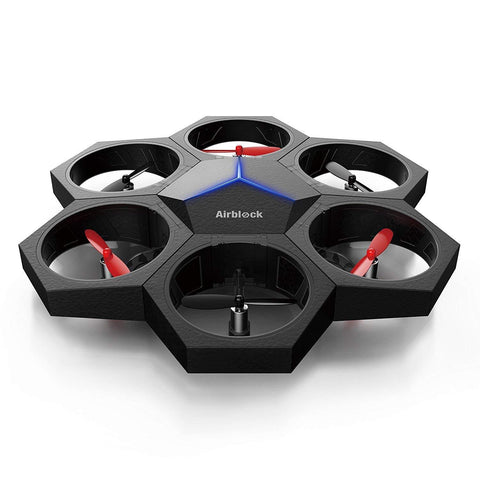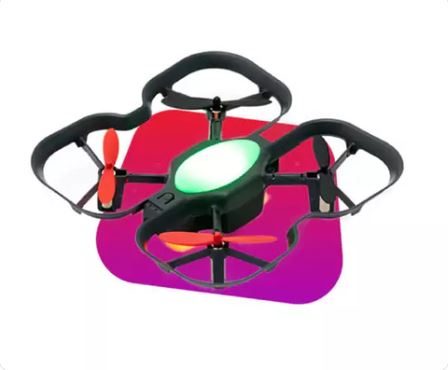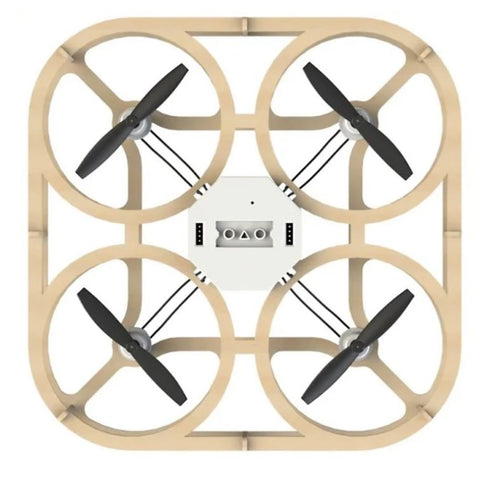Is it a bird? Is it a plane? No, it's a drone!
These fantastic flying machines, which were once something out of a sci-fi movie, are now accessible to everyone and have been successfully incorporated into STEM education.
How you may ask? Schools today are using educational drones to help students learn coding, flight, and physics concepts. By programming and flying their drones, kids gain practical knowledge of coding and are introduced to the laws of aerodynamics. These are essential skills for anyone looking to pursue a career in computer science, aviation, or even engineering.
But drones aren't limited to STEM learning. They can also be used in subjects like art, photography, drama, and film. Most drones come with a camera that students can use for taking pictures and shooting films. The next Steven Spielberg could be in school right now filming with a drone!
These skills are highly transferable and sought after in many industries. Below is a list of industries that are adopting drone technology and are in strong need of experienced personnel.
- Security & surveillance - both the police and military use drones for surveillance.
- Farming - drones are used by farmers to plant seeds, check soil conditions, and monitor crop health.
- Construction - whether it's after or before construction, drones are used to inspect structures from angles that are not easily accessible.
- Telecommunications - drones have been used for setting up temporary cell phone towers in isolated areas.
- Filmography - from blockbuster movies to wedding videos, drone pilots have never been busier. They are even used in real estate for taking aerial shots and videos of large properties.
How to choose the best drone
Choosing the best educational drone can be challenging, and that's why we have created a formula for selecting the best on the market. The perfect drone should score high in the following five areas:
- Affordable - for many school budgets, every dollar counts, especially when it comes to purchasing new technology like drones.
- Safe for kids to use - large commercial drones have the potential to be very dangerous if used improperly or carelessly. Purpose-built educational drones are lighter-duty and come with safety features like enclosures around the propeller blades.
- Easy to fly - at least, easy enough that new pilots don't need more than basic hand-eye coordination to have fun and avoid crashing. Auto-hover is a staple here.
- Camera-equipped - ideally one with video recording capabilities so teachers can easily review flight footage and share it with students.
- Accompanied by educational resources - the best drones for use in schools come with access to teaching and learning resources, usually online.
DJI Ryze Tello EDU
The DJI Ryze Tello EDU is a programmable drone that comes with a 5MP 720p camera and a staggering flight time of 13 minutes. The DJI Tello can be yours for $219.00, with the controller available separately.
Kids can code and fly their Tello drone using a dedicated mobile app. The coding options available are Python, Scratch, and Swift, plus Mission Pads for advanced programming. Students can write code that will enable their Tello drone to recognize each Mission Pads' unique ID and perform aerial acrobatics.
Multiple drones can be programmed at once using one device, through a feature called Drone Swarm. This allows students to make their drones perform coordinated acrobatics for a perfect mix between STEM learning and the arts.
Finally, DJI offers a wide range of educational resources on their Education Hub for both young and older students.
Reasons to buy: long battery life, 5MP camera, multiple coding options.
Reasons to avoid: controller available separately (but can be flown with the App).
Makeblock Airblock

The Makeblock Airblock is a modular and programmable drone that will set you back $159.00 per unit. It has a flight time of 8 minutes and unfortunately does not come with a camera. The absence of a camera significantly minimises the number of activities the drone can perform and this can be a real dealbreaker.
The drone supports block-based and text-based coding, making it suitable for both young students and older ones. To program your Makeblock Airblock you will have to use the dedicated mBlock5 programming platform and to fly it you must download the Makeblock App on either phone or tablet. The absence of a controller can make the drone hard to fly, so keep this in mind when making your final choice.
This programmable drone has magnetic connectors for quick and easy assembly and supports DIY builds. Most notably, it can be turned into a hovercraft that is ideal for indoor use in case the weather outside is bad.
It’s important to note that the Makeblock Airblock has been recently discontinued, so there is limited stock available. If you can’t get your hands on one, we recommend going for the Airwood Cubee, which we will talk about more next.
Reasons to buy: block-based and text-based coding, hovercraft mode.
Reasons to avoid: no camera, requires phone or tablet to fly.
Airwood Cubee Drone EDU
The Airwood Cubee Drone EDU is made from a light wooden frame and comes with a 3MP 720p camera. It has a flight time of 6-8 minutes and comes with a price tag of $229.95 per unit.
The educational drone comes with a patented modular structure that can be put together and customised without the need for tools. This is ideal for young children and is safe for primary school classrooms.
Kids can program their Airwood Cubee using building block coding with Mixly and can fly the drone using the controller that comes in the box. Unfortunately, there is no mobile app for programming, but there is an app for using the drone's camera - which is available on both iOS and Android.
Reasons to buy: 3MP camera, easy assembly, controller included in the box.
Reasons to avoid: only programmable with Mixly, no mobile app for programming.
CoDrone EDU

The CoDrone EDU is a flexible classroom drone with a maximum flight time of 8 minutes and a starting price of $214.99 per unit. Unfortunately, it does not have a camera and this does limit the number of activities and lessons you can do with it.
The drone can be programmed using Blockly or Python and students can fly it using the dedicated controller that comes in the box. The device is compatible with both Windows and MacBook computers, which kids can use to program the LED lights and sounds the drone emits.
This is a good drone for young children attending primary school and is a great way to introduce coding basics. However, it is not ideal for older students, as the coding exercises are quite basic. Even the programmable LEDs are not as advanced as on the RoboMaster TT drone we will talk about next.
Reasons to buy: programmable LEDs and sound, controller included in the box
Reasons to avoid: no camera, no mobile app for programming
DJI RoboMaster Tello Talent
The DJI RoboMaster TT is essentially the upgraded version of the Ryze Tello drone. It comes with a 5MP 720p camera, between 8 to 13 minutes of flight time, and a list of exclusive features we will discuss below. The drone can be yours for $389.00, but you will have to spend extra if you want a controller.
Like the Tello drone, the RoboMaster TT comes with a dedicated mobile app for coding and flying the drone. Mission Pads and the Drone Swarm feature are also available, but what makes this drone unique are its programmable LED dot-matrix screen and sensor adapter.
Students can improve their coding skills further by programming the LED dot-matrix screen with Python and Arduino. To make things even more interesting, kids can use the official DJI SDK app to program the sensor with interfaces such as I2C, SPI, UART, and GPIO.
Reasons to buy: 5MP camera, programmable LED dot-matrix screen, multiple coding options.
Reasons to avoid: controller available separately (but can be flown with the App).
The final verdict
Drone technology can seriously aid STEM education and give kids practical skills they can use for future careers.
Selecting the best drones for education is not an easy task and you must weigh a lot of factors. Above we have listed what we believe are some of the best drones on the market, but some people might want us to narrow the list even further.
For beginners, we recommend the Airwood Cubee because it comes with a controller and uses block coding. These make the drone easy to fly and easy to program and are therefore an excellent choice for primary school students.
For intermediate users, we recommend the DJI Tello because it can be coded using Python, Scratch, and Swift, plus Mission Pads for advanced programming. This drone is perfect for students attending the last years of primary school or the first years of high school.
Finally, we have the DJI RoboMaster TT which is a more advanced version of the DJI Tello. This drone is ideal for high school students because of its added features like the programmable LED dot-matrix screen and the sensor adapter.
To shop for educational drones, visit our online store at CD-Soft. We have a wide range of STEM education products for the classroom, including the drones mentioned above.
Contact us today for any additional help or information you may need!





